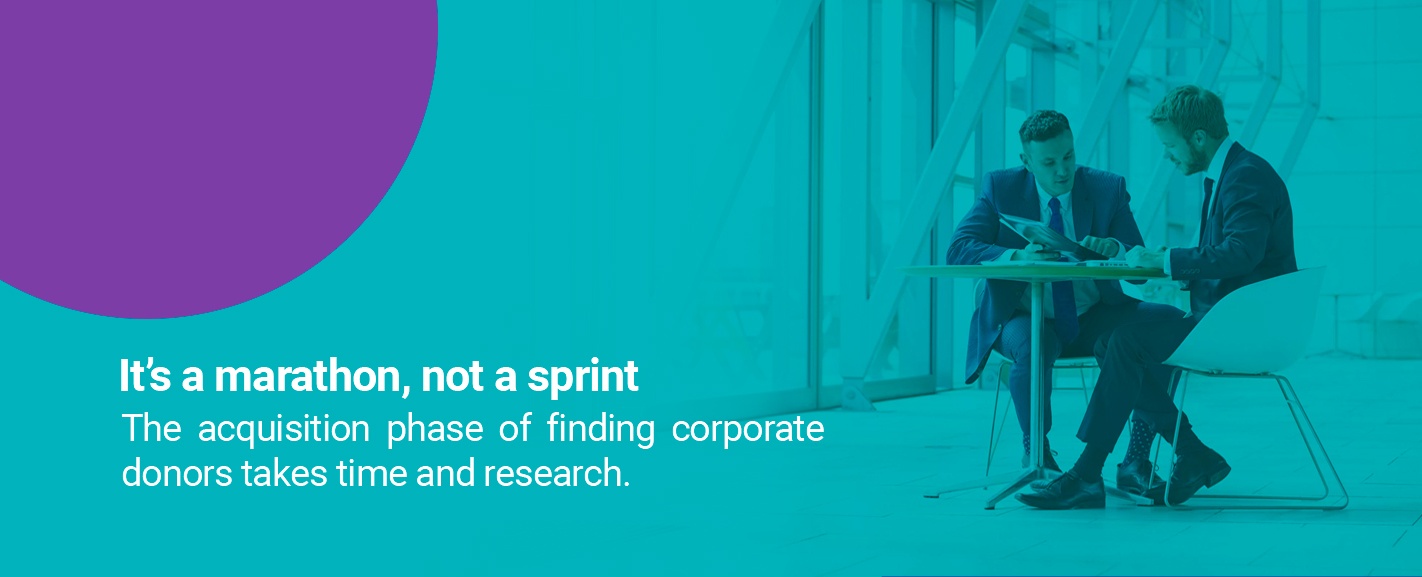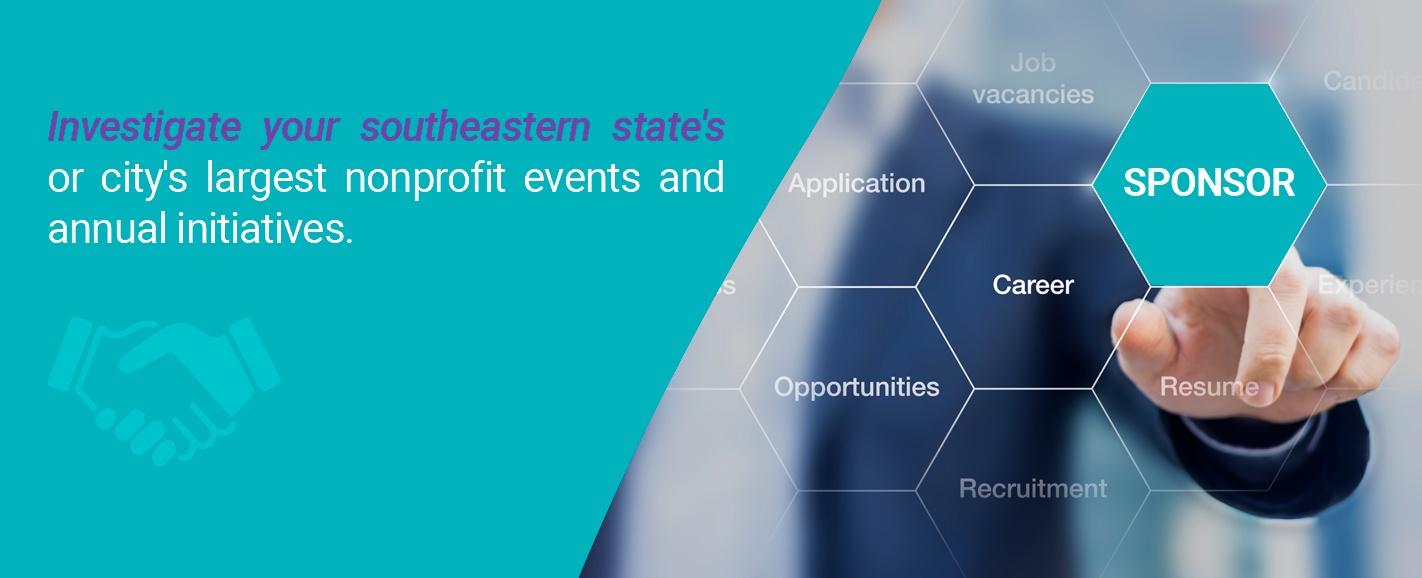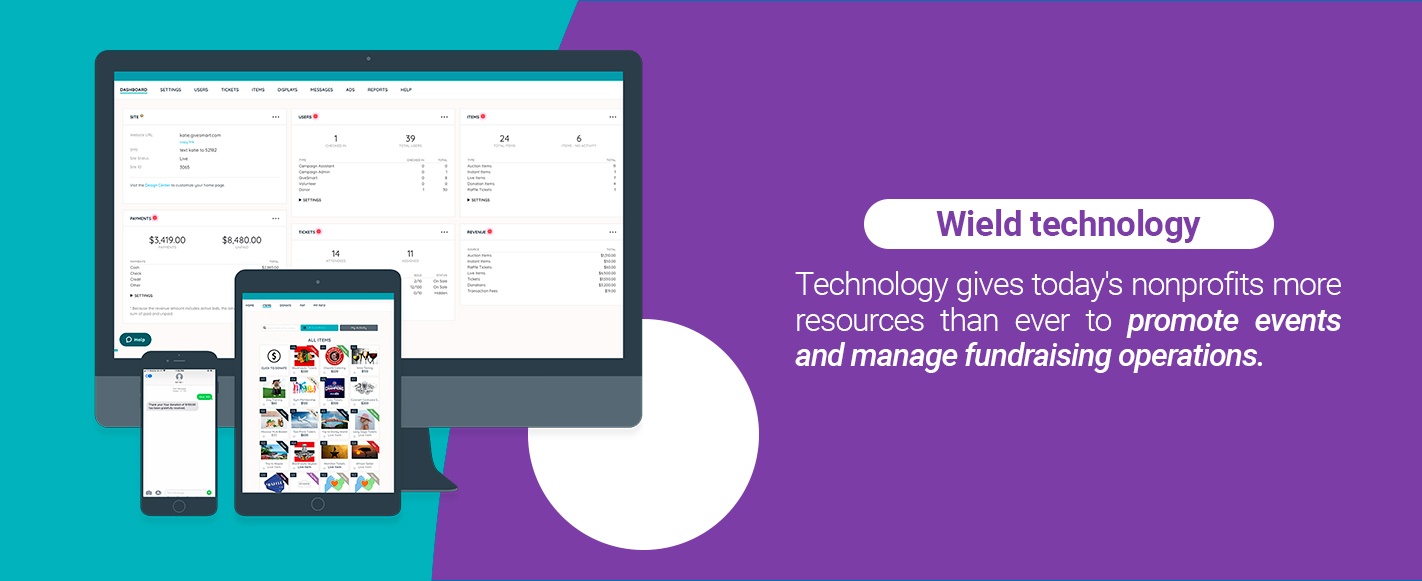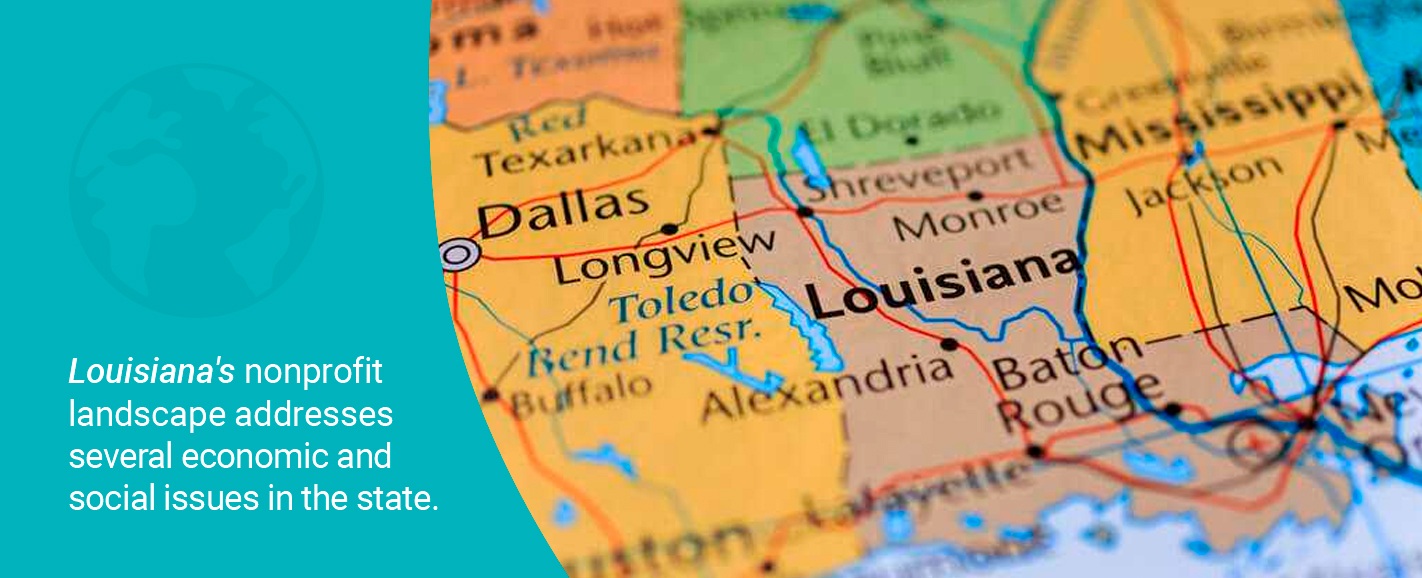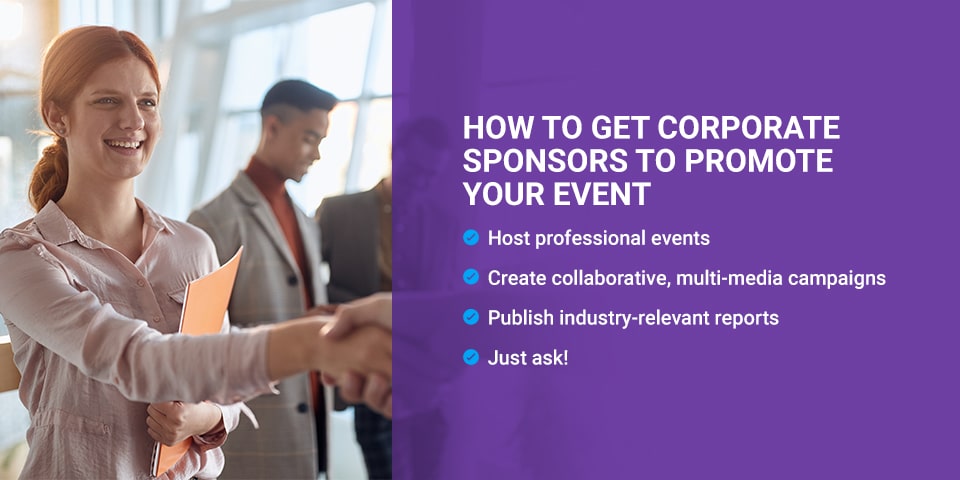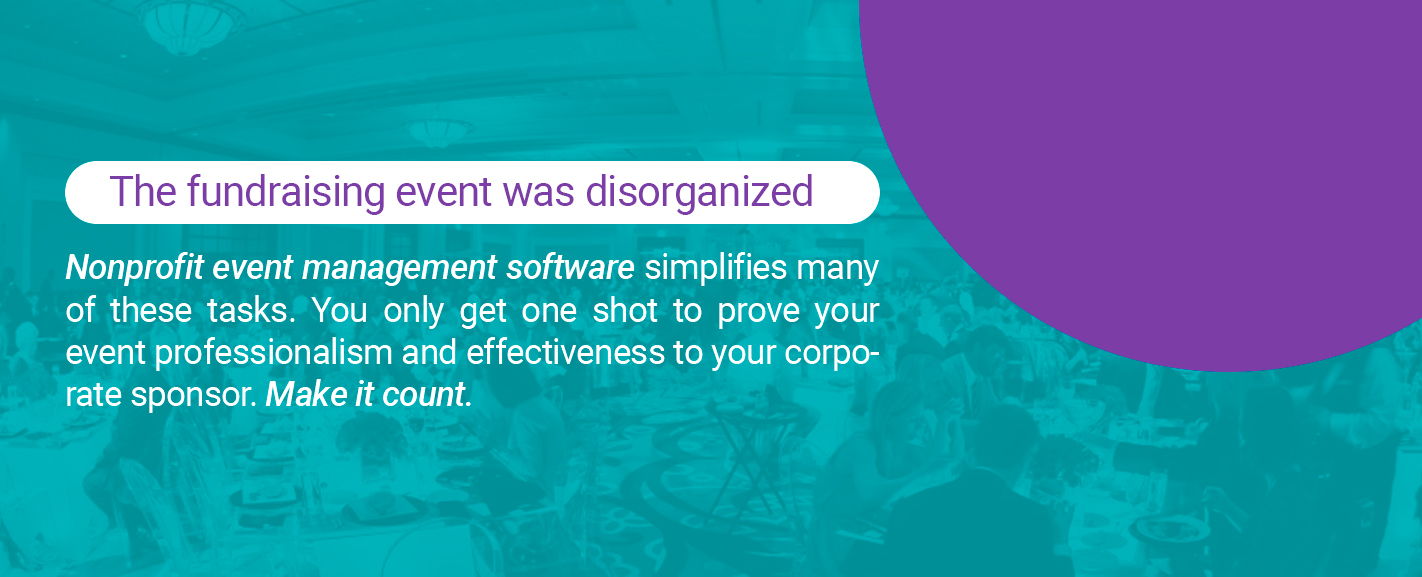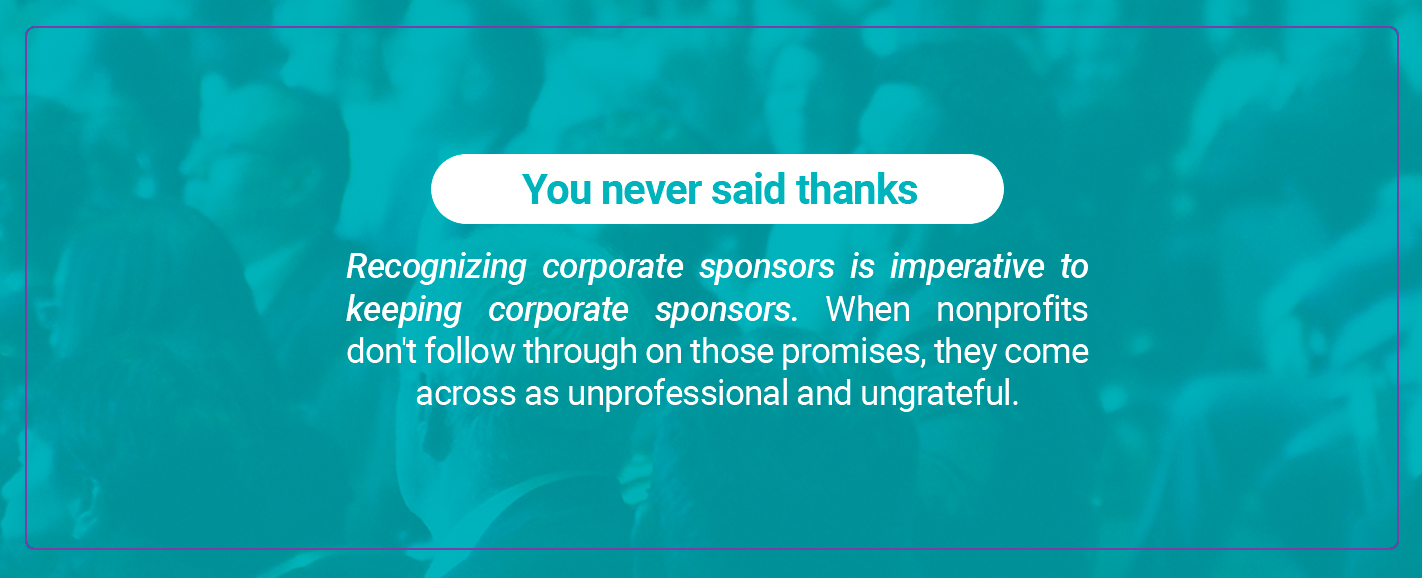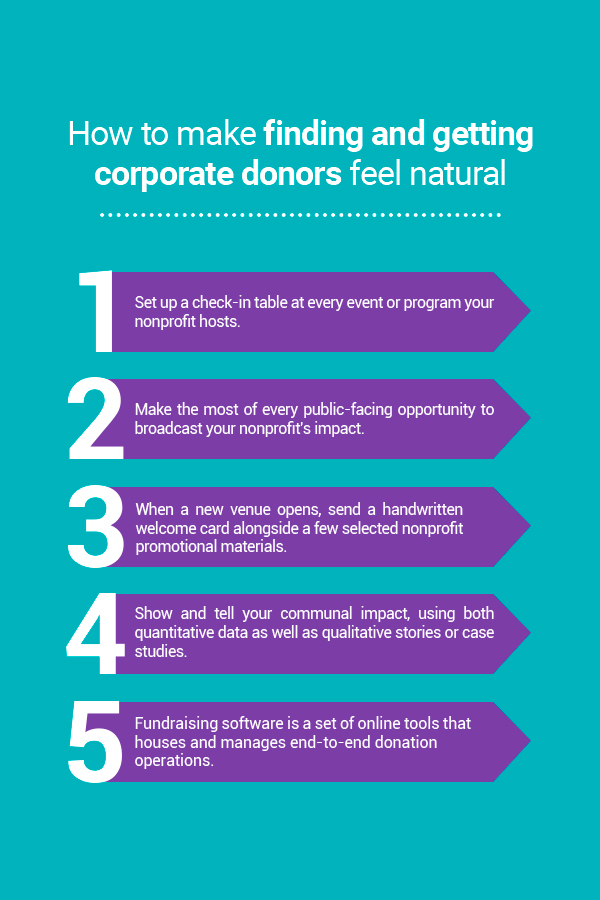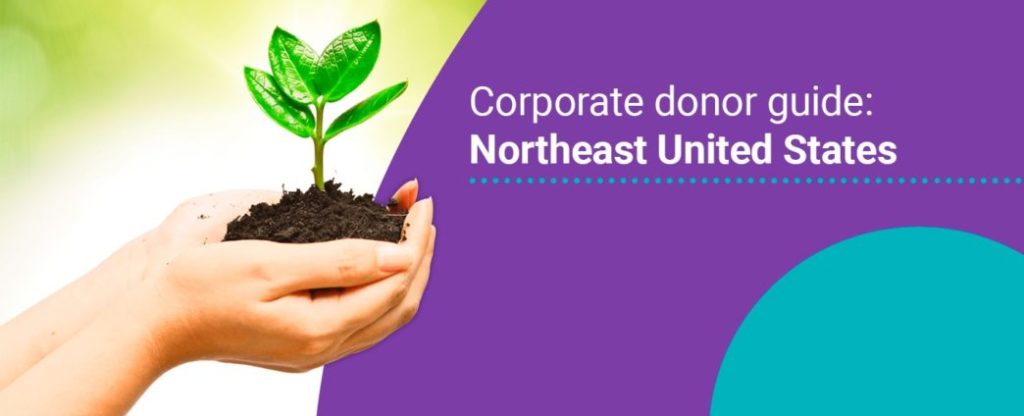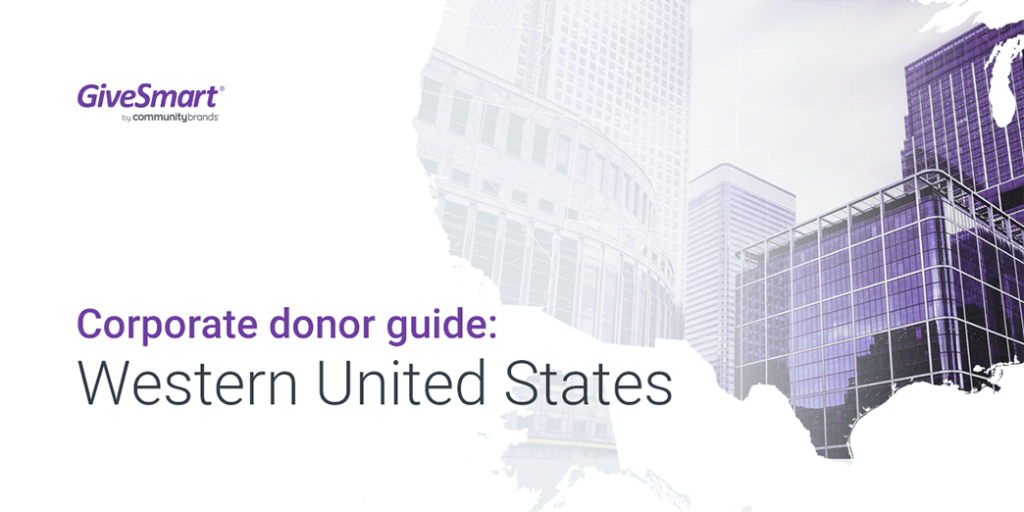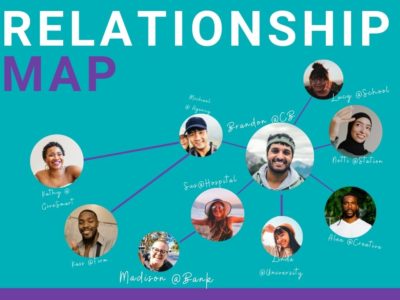Apr 11, 2019
Corporate Donor Guide: Southeast
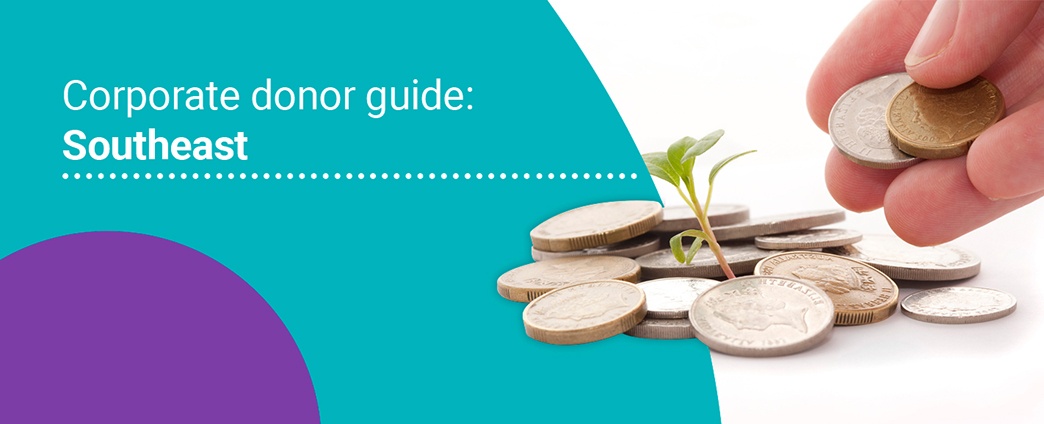
Procuring corporate donors takes nonprofit fundraising to the next level. From sourcing in-kind gifts for silent auctions to creating ongoing event partnerships with philanthropic organizations, corporate donors tip the scales toward broader communal reach and impact — the dream of every nonprofit.
Our Southeast Corporate Donor Guide identifies top corporate donors across 11 Southeastern states. Click the organizations to visit their corporate donations pages, then continue reading this guide for further tips and tricks to positioning yourself as the area nonprofit companies want to sponsor.
Southeastern states corporate donor guide: how to use this guide
Regional corporate donation guides provide support for your nonprofit to better identify, pitch, and secure ongoing sponsorships with ideal, local corporate philanthropists.
In this guide, you’ll find:
- How to find and secure corporate donations for nonprofit fundraising events
- Top corporate donors and sponsors in Southeastern states, covering Arkansas, Florida, Georgia, Kentucky, Louisiana, Mississippi, Alabama, North Carolina, South Carolina, Tennessee, Virginia, and West Virginia
- Ways for those corporate donors to promote your events
- How to build an ongoing relationship with corporate partners — and ensure they keep giving
For additional regional donor guides, check here:
- Western States Corporate Donor Guide
- Northeast Corporate Donor Guide
- Houston, TX Corporate Donor Guide
- Miami, FL Corporate Donor Guide
For more fundraising resources for nonprofits in major cities across the United States, explore our GiveSmart blog.
How to find corporate donors for your fundraising event
Acquiring new donors — particularly corporate ones — is a vital activity at the heart of sustainable nonprofit management and strategic planning.
Learn how to navigate the corporate donor landscape, secure the right kind of sponsors for your event, and fundraising promotions with these actionable tips.
1. It’s a marathon, not a sprint
Nonprofit leaders need to understand there’s no “quick fix” to corporate donations and relations. The acquisition phase of finding corporate donors takes time and research. It also involves trial and — sometimes — error, using a range of direct communication tactics such as emails, phone calls, etc. to introduce yourself, relay your request and iterate a donation’s impact.
Most importantly, it’s about the effort; Nonprofits that make a strategic priority to identify, contact, pitch, and follow up with area corporate donors will be more successful in the long term than those who attempt partnerships only a handful of times.
2. Use your current network
Every nonprofit, regardless of size or name recognition, carries a group of constituents who are organically connected or invested in its work. This connection stems from two motivators: First, people sharing similar hurdles, questions, or life obstacles can share it, or it can exist between individuals with a pre-established, invested relationship.
Using pre-existing networks helps nonprofits find like-minded individuals who will be more invested in your mission or work. Consider the following networks members of your nonprofit can reach out to when seeking corporate donor leads:
- Friends and family on social media
- Religious congregations
- Universities, schools, and their parent and alumni networks
- Neighbors, neighborhood associations
- Professional groups or organizations
- Work colleagues — ideal for a nonprofit’s volunteers to reach out to
- Retirement communities
- Hobby or leisure clubs — e.g., book clubs, recreational sports leagues, etc.
3. Talk to employees
Three-quarters of Millennials feel that it’s important for companies to be philanthropic and support different causes. These philanthropic expectations run both ways. In one of its most extensive surveys of workplace giving, America’s Charities® found 87 percent of organizations say its employees expect them to engage in philanthropic activity, while 86 percent say their employees want them to provide volunteer opportunities directly.
Nonprofits can use these findings to their advantage. Directly contact appropriate employees at organizations, relaying both ongoing volunteer needs as well as more macro funding and event sponsorship opportunities aligned with their company mission.
4. Research similar events and fundraiser sponsors
Investigate your Southeastern state’s or city’s largest nonprofit events and annual initiatives. Common fundraising events include charity walks or marathons, concerts, festivals, large auctions, and benefit galas.
In particular, research the corporate sponsors of these events. Often, you’ll find them listed on fellow nonprofits’ websites, as well as on event merchandise like T-shirts, water bottles, tote bags, and calendars. You may even want to look on social media to see if a nonprofit has tagged their benefactors — a fundraising best practice on how to recognize corporate sponsors.
5. Look into company values and mission statements
The best nonprofit-corporate partnerships are those with value alignment. Organizations with similar services or target demographics as yours will see an intuitive connection working with your nonprofit — and will be much more likely to maintain their involvement over the long term.
For example, a regional bank will find value in sponsoring financial literacy workshops at a local school, while a hardware store is likely to work on community housing or urban renewal initiatives.
6. Wield fundraising technology
Technology gives today’s nonprofits more resources than ever to promote events and manage fundraising operations. Platforms like Facebook and Instagram add more personal, human touchpoints to activities like donation requests or showcasing upcoming event calendars, while event-management software designed specifically for nonprofits makes creating, running, and sustaining fundraising pipelines easier — text-to-give campaigns, anyone?
7. Stay local
Local organizations have a vested interest in their immediate communities. They’re much more likely to commit to nonprofits with proven area impact, benefiting neighborhoods and constituents close to home.
Target companies with regional branches or headquarters in your state or hometown. Not only will the local impact be more evident, but you’ll be able to offer additional partnership perks, such as convenient employee volunteer opportunities or exclusive, thank-you events for donors.
Corporate donors in the Southeast
Provided below are well-regarded corporate sponsors with strong regional philanthropic ties to the Southeast. Nonprofits located across these 11 states can use this corporate sponsor list as a launching point to securing increased donations — plus raise awareness behind causes and events that hit closest to home.
1. Corporate donors in Arkansas
Arkansas’ roughly 16,075 registered nonprofits employ over 154,000 workers. Its current nonprofit work prioritizes health and human services, with other philanthropic activities tackling issues like rural housing development, food insecurity, veterans’ affairs, and small-town revival efforts.
Leading corporate donors in Arkansas include:
- Acxiom Corporation
- Arkansas Community Foundation Grants
- Arkansas Razorbacks
- Arvest Bank
- Cox Arkansas
- Culligan Water
- Phat Tire
- Tyson Foods
- The Walton Family Foundation (Walmart)
2. Corporate donors in Florida
The Sunshine State is no stranger to philanthropic activity. From corporate partnerships supporting the sandy coasts of Miami to environmental preservation work in the Everglades to economic development initiatives in northern and western Florida, the state is home to over 94,000 nonprofit organizations generating upwards of $105 billion in annual revenue.
Impressive figures aside, Florida is also a hotspot for domestic and international companies looking to establish regional headquarters with access to Latin America. It positions Florida nonprofits to pitch several prominent organizations with sizeable philanthropic resources, yet a close connection to the state:
- American Airlines
- Carnival Cruises
- Cisco Systems
- Cox Florida Central
- Cox Florida Gulf Coast
- It’Sugar Candy
- Office Depot
- Tito’s
- Topgolf
- Whole Foods Miami
3. Corporate donors in Georgia
Corporate donations and sponsorships are vital to the more than 58,000 registered nonprofits calling Georgia home, many of which are in the state’s social and economic hubs, Atlanta and Savannah.
Though the city of Atlanta is ranked 37th in total population, it generates the country’s 10th-largest city-based GDP. Georgia nonprofits reap the benefits of the area’s strong economic profile with plenty of corporate donation and partnership opportunities, some of which include:
- Acuity Brands
- Aflac
- Community Bankers Association of Georgia
- Cox Georgia
- Delta Airlines
- Flowers Foods
- Georgia Power
- LexisNexis
- Sprouts Farmers Market
- Tyson Foods
- Waffle House
4. Corporate donors in Kentucky
Kentucky’s 20,000 nonprofits dedicate time and resources to addressing educational and housing disparities and health and human services, as well as expanding arts and humanities opportunities in the Bluegrass State. Almost 10 percent of the population works for nonprofit organizations, many of which rely on corporate sponsorships from small and large companies alike to amplify their impact.
Top corporate donors in Kentucky include:
- B&B Beverage Co.
- Churchill Downs Incorporated
- Heine Brothers Coffee
- Humana
- Kona Ice
- Lexmark
- Remke Markets
- Texas Roadhouse
- Yum! Brands
5. Corporate donors in Louisiana
Louisiana’s nonprofit landscape addresses several economic and social issues in the state. From environmental education and ecological preservation along its Gulf coastlines to urban renewal and economic initiatives in major metropolitan centers like New Orleans and Baton Rouge, Louisiana is home to just over 20,000 registered not-for-profit groups.
Ongoing corporate philanthropic partnerships help the state treasure and maintain its one-of-a-kind culture and heritage. Companies with strong roots in the Bayou State include:
- CenturyLink
- Community Coffee
- Cox Louisiana
- Entergy
- Lamar Advertising
- Margaritaville Resort & Casino
- Raising Cane’s
- The Shaw Group
- Smoothie King
- Tales of the Cocktail
6. Corporate donors in Mississippi
The birthplace of blues is home to a predominantly agricultural and manufacturing economic profile. Indeed, the agriculture industry is the state’s top industry, employing almost 20% of its residents. Mississippi is one of the nation’s largest producers of broiler chickens, eggs, rice, cotton, and soybeans.
Nonprofits help bridge the economic gaps of this rural-leaning state through educational advancement, job readiness, and social welfare efforts, with Mississippi’s 15,347 nonprofits — mostly education- and religious-based organizations — building partnerships with area companies. Top corporate donors in Mississippi are in the agriculture, gaming, and energy sectors, including:
- Bancorp South
- Boyd Gaming
- Entergy
- Island View Casino, Resort & Spa
- Pearl River Resort
- Sanderson Farms
- Tyson Foods
7. Corporate donors in Alabama
Alabama boasts a total of over 24,000 nonprofit organizations, bringing in over $15 billion annual revenue. Many of these organizations focus on specific communities and deal with everything from arts and culture to health and the environment.
One of the organizations focused on communities is the Red Cross in Alabama. Currently, the organization is installing free smoke alarms to reduce fire deaths and injuries. Alabama’s rich habitat is also receiving funds through the Nature Conservancy of Alabama. From the shorelines to nature preserves and more, the organization is protecting the environment and creating local jobs.
However, these organizations couldn’t operate without charitable giving from corporations and more. The top 10 corporate sponsors in Alabama include:
- Alabama Power
- BlueCross BlueShield of Alabama
- Vulcan Materials Company
- University of Alabama
- Southern Company
- Regions Financial Corporation
- EBSCO Industries, Inc.
- Alfa Insurance
8. Corporate donors in North Carolina
North Carolina’s ecological and economic diversity makes it a unique Southeastern state. Leading sectors include agriculture, textiles and food processing in Appalachian-hugging western North Carolina, while the state’s coastal regions and inland city centers like Charlotte and Raleigh are home to major financial institutions, pharmaceutical companies and large energy, and defense contractors.
This eclectic corporate tapestry gives the Tar Heel State’s 37,000 nonprofits plenty of unique corporate donors to research and pitch, including companies like:
9. Corporate donors in South Carolina
Agribusiness, automotive manufacturing, and aerospace make up the top industries in South Carolina. You’ll find over 17,000 nonprofits dedicated primarily to health care, human services, financial literacy, and education, seeking to boost the economy and quality of life for its 5 million residents — many of whom live throughout rural areas.
Corporate donors in South Carolina with strong state ties include:
10. Corporate donors in Tennessee
Tennessee is aptly named as the Volunteer State, given its strong nonprofit sector employing roughly over 357,000 people across more than 37,000 organizations.
Top corporate donors in Tennessee include:
- AutoZone
- Dollar General
- HCA Healthcare
- Hershey
- International Paper
- Malco Theaters
- Omni Nashville Hotel & Resort
- Unum Group
11. Corporate donors in Virginia
Old Dominion is one of the nation’s founding states, as well as a hotbed for corporate-nonprofit philanthropic activity. Companies based in Virginia have a long history of social and community involvement, assisting the state’s 36,210 not-for-profit organizations in veteran affairs, wildlife conservation, health and human services, job readiness, and educational empowerment.
Major corporate donors with roots in Virginia include:
- Bell’s Brewery
- Cox Virginia Fairfax, Fredricksburg
- Cox Virginia Hampton Roads
- Cox Virginia Roanoke
- The Container Store
- Dollar Tree
- Mars
- Omni Homestead Resort
12. Corporate donors in West Virginia
Chemical manufacturing, automotive manufacturing, financial services, and raw material sourcing constitute much of West Virginia’s economic profile. Companies partner with West Virginia’s 11,521 nonprofits to improve its predominantly rural communities, expanding opportunities for health care, housing, infrastructure, and overall community revival efforts.
Top corporate donors in West Virginia include:
- Academy Sports + Outdoors
- Huntington National Bank
- Mardi Gras Casino & Resort
- Marquee Cinemas
- West Virginia Wine & Jazz Festival
- Wells Fargo
How to get corporate sponsors to promote your event
Corporate donors can do much more than provide ad-hoc financial support or in-kind donations. When nurtured, these partnerships expand your nonprofit’s visibility, putting you out there in front of new audiences and new donors. Here’s how.
1. Host professional events
A key part of positioning yourself to corporate sponsors is to present mutually beneficial opportunities for those within that corporation — employees, managers and executive leadership alike.
Consider hosting special, invite-only professional events targeting these groups. Get creative, matching the event with its intended corporate guest list. For example:
- A young professionals’ happy hour
- Area business leaders’ luncheon
- Free or discounted professional development courses
Most importantly, allow your corporate partner to invite guests to each of these hosted events. They’ll reach out to colleagues, business leaders and industry experts within their networks, who in turn become further leads for further corporate-donor connections.
2. Create collaborative, multi-media campaigns
Consider creating pieces — or a whole series — of content marketing both you and your corporate sponsor can share across platforms. Try creating content that’ll be of interest to both your core audience demographics, then spread them across relevant mediums like social media pages, e-newsletters, blogs and more.
Ideas of collaborative multimedia campaigns might be:
- A helpful “how-to” blog series
- Visually arresting infographics
- Origin stories of your nonprofit and your corporate sponsor relating to your hometowns
- User-generated content, such as selfies with a branded hashtag
3. Publish industry-relevant reports
Take a look at the industries your nonprofit’s corporate partners are in. Ask what core trends, behaviors or information is pertinent to that industry, then publish insightful, localized case studies, whitepapers, consumer surveys or even multi-series blog posts dedicated to that topic. Send this content to your corporate sponsors, asking them to host it on their websites as well as share it via social media. In the end, they look like industry authorities while you get free advertising, with your nonprofit’s name included as the author or content sponsor.
4. Just ask!
Many businesses, especially small- to medium-sized ones, would be happy to hang community promotional materials in their stores, restaurants, coffee shops and more. Ask to position posters or event promotions as close to the register as possible, or on dedicated communal boards, if they have them. Return the favor by displaying local businesses’ paraphernalia in your nonprofit’s office, where appropriate.
Top three reasons corporate sponsors don’t give again
Knowing how to secure consistent corporate donations means avoiding these partnership faux pas — which, at the very least, will have a company quietly cutting ties at year’s end, and at the most, permanently stain your nonprofit’s reputation.
1. The fundraising event was disorganized
Conducting a large-scale fundraising auction? Hosting a recreational sports tournament? Putting on a community-wide festival? These are common fundraising events nonprofits use annually to generate brand buzz and charitable funds, yet they require months of preparation to pull off.
At a minimum, most nonprofit fundraising events will require theme selection, venue booking, food and beverage offerings, games, entertainment, promotion, item or donation management, guest registration and checkout, cleanup and attendance or participation thank yous.
Nonprofit event management software simplifies many of these tasks. You only get one shot to prove your event professionalism and effectiveness to your corporate sponsor. Make it count.
2. There was value misalignment between your organization and the sponsor
What initially read as a perfect partnership on paper may not play out as such. For any number of reasons, a corporate sponsor might be the wrong fit for the work you do, and vice versa:
- New corporate leaders may have other donation or philanthropic leanings, or have pre-existing ties with other nonprofits.
- Corporate employees may not hold the necessary buy-in to participate and promote events — or be too busy.
- Corporations may not incentivize philanthropic activity as much as they advertised.
- Corporate partners may be starting 501(c)(3) or (c)(4) foundations and subsequently funneling all philanthropic activity into them.
- A corporation’s products or services may reveal themselves to be at odds with your mission.
3. You never said “thank you”
Recognizing corporate sponsors is imperative to keeping corporate sponsors. It’s a best practice to iterate in your partnership how you intend to thank a company for their support, both formally and informally. When nonprofits don’t follow through on those promises, they come across as unprofessional and ungrateful.
How to make finding and getting corporate sponsors feel natural
Acquiring local corporate sponsors is a daunting task. Use these tips when approaching an organization for the first time, as well as a few extra insights on ways to maximize the network of corporate contacts and donors you already have.
1. Use current events and programs to capture leads
Set up a check-in table at every event or program your nonprofit hosts. When guests arrive, have them write down their name and preferred contact information. Just like that, you’ve created a tailored “leads list,” a network of contacts who’ve indicated interest in your nonprofit and are likely primed to participate with it even further.
Expanding your corporate donor lead list like this turns the often blind “sales pitch” into an organic, natural part of hosting an event. Your nonprofit can then contact each guest on the list, thanking them for their attendance and opening the conversation to future events, volunteer requestion, donation campaigns and more.
2. Be a brand evangelist
Make the most of every public-facing opportunity to broadcast your nonprofit’s impact. Use civic engagement opportunities to organically discuss the work your nonprofit does, then make it easy for other guests to reach out to you for further information.
There are more opportunities than you think to leverage local events into free nonprofit PR:
- Volunteer as a speaker at local schools, churches, corporate gatherings and more.
- Attend other civic group meetings and events.
- Wear branded merchandise.
- Pitch local celebrities and influencers to post about you on social media.
- Research relevant podcasts, then reach out to offer yourself and a specialized topic as a guest.
- Publish content in local newspapers, magazines, newsletters, online blogs and more.
3. Be a community welcome wagon
Keep a pulse on new or expanding businesses in town. When a new venue opens, send a handwritten welcome card alongside a few selected nonprofit promotional materials. If your nonprofit is hosting an event soon, make sure to highlight how you’d love to see them there.
Initiating these welcoming gestures cements a stand-out first impression to the new business, as well as creates a memorable, personal connection. They’ll be much more likely to positively receive a donation or partnership request from your nonprofit down the road, if you choose to pitch one.
4. Show and tell
Prioritize passion and purpose in all your nonprofit’s public-facing materials. Show and tell your communal impact, using both quantitative data as well as qualitative stories or case studies. Driving home impact through passionate, story-like publications will resonate more with audiences and make them want to engage with your nonprofit.
5. Use fundraising event software
Fundraising software is a set of online tools that houses and manages end-to-end donation operations. In one computer and mobile-friendly system, your nonprofit can more organically:
- Launch fundraising campaigns, including text-to-give.
- Create and track campaign pledges.
- Send donor communications.
- Manage email lists.
- Relay, in real time, donor names and amounts, if desired.
- Send donor receipts, and much, much more.
With event management and online donation software handling finances, nonprofit staff can spend less time on “hard” donation sales pitches and more time on program development, strategic planning and nonprofit growth.
Learn more about how to secure corporate donations
Here at GiveSmart, our mobile bidding and online event management software has one goal: to help nonprofits raise more money with less stress. On the day of your event or fundraiser, your staff and volunteers can focus on authentic guest experiences and your mission fulfillment, not crunching numbers.
Save and share this Southeast regional guide for future fundraising and donation ideas — then reach out to a GiveSmart rep for your free software demo today.
Related

